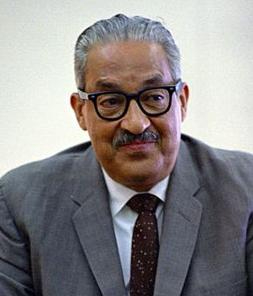
Brown v. Board of Education
The story of America's struggle toward equality is complex. But in its ideals, America has stood for the principles expressed in the Declaration of Independence, the Constitution, and the Bill of Rights.
On May 17, 1954, the U.S. Supreme Court in Brown v. Board of Education ruled that the Constitution forbids laws segregating public schools by race. This historic decision opened the doors of opportunity for many Americans. Teach Democracy presents a series of online lessons marking the Brown decision.
Lessons
The Southern "Black Codes" of 1865-66
The end of the Civil War marked the end of slavery. Seeking to control the former slaves, Southern states devised special state law codes.
Race and Voting in the Segregated South
Despite the 14th and 15th amendments guaranteeing the civil rights of African-Americans, their right to vote was systematically taken away by Southern state governments.
Three Visions for African-Americans
Competing visions put forward by three African-Americans at the turn of the 20th century: W.E.B. Du Bois, Booker T. Washington, and Marcus Garvey.
In the Courts
The history of hard-fought courtroom battles that led up to the historic Brown decision.
Mendez v. Westminster: Paving the Way to School Desegregation
|In 1947, seven years before the Brown decision, a federal appeals court ruled that Mexican-American children could not be forced to attend segregated schools in California.
Brown v. Board of Education (1954) The End of Legal Segregation
The landmark U.S. Supreme Court decision in Brown v. Board of Education, led to the end of legal school segregation and other forms of legal segregation throughout the United States.
The Adarand Case: Affirmative Action and Equal Protection
The debate over whether affirmative action programs, designed to help minorities and women, are a form of reverse discrimination, doing more harm than good.
Affirmative Action in American Colleges After Fisher v. Texas
The 2013 U.S. Supreme Court decision leaves in question the future of affirmative action programs for college admissions.
Including the Disabled Student
Under the requirements of federal law, more disabled students are being included in regular classroom. Is this the best way to educate them?
 PROFILE: Thurgood Marshall
PROFILE: Thurgood Marshall
Thurgood Marshall was a lawyer for the National Association for the Advancement of Colored People (NAACP). He and other lawyers argued the Brown v. Board of Education case before the U.S. Supreme Court. Marshall was later appointed to the U.S. Supreme Court, becoming the court's first African-American associate justice.

